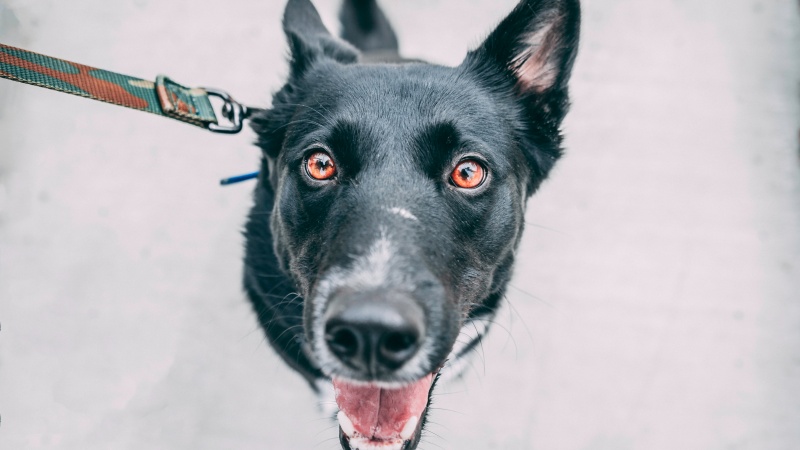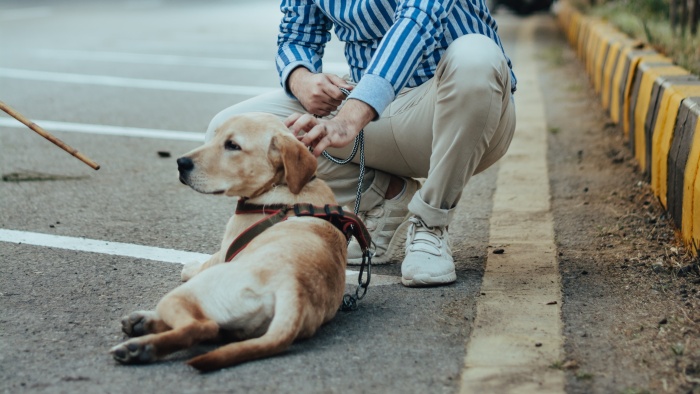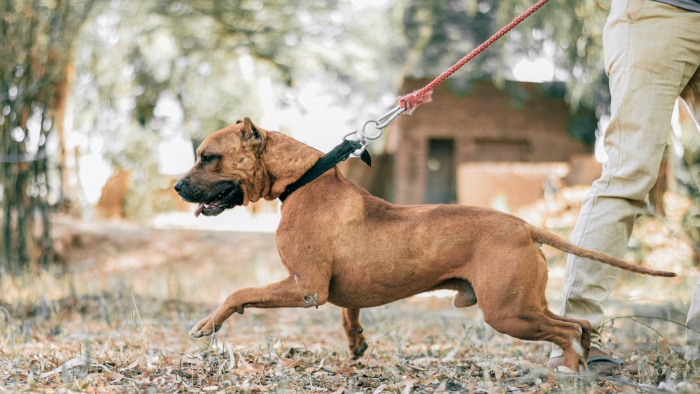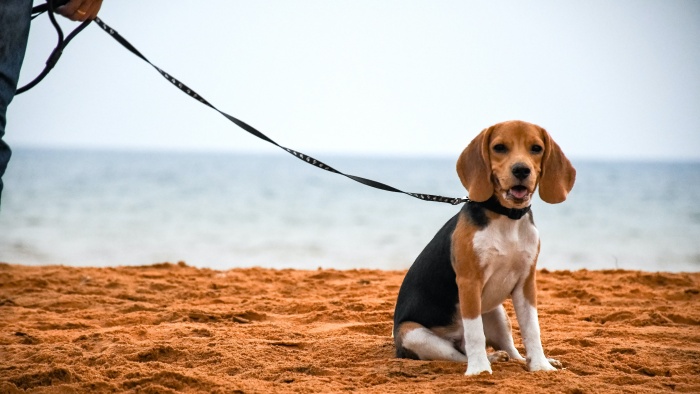Long line:Pros And Cons In Dog Training

I’ve always found a long line cumbersome to manage, especially when training a dog. Unlike my first dog who had excellent recall from a young age and didn’t need one, my second, more independent dog, raised away from city life, required the use of a dragline in her initial months.
There were moments when this tool was invaluable, and others when removing it was necessary for safety, highlighting the various advantages and disadvantages of long lines that I hadn’t fully appreciated before.
This article aims to explore these different situations, examine each risk involved, and provide guidance on when and how to use a long line effectively.
What exactly is a long line, and what’s the purpose behind its use?
A long line is just as its name suggests: an extended leash, available with or without a handle.
Typically, these are crafted from rope/fabric or, more recently, a durable synthetic material. While ropes are lightweight, they pose a risk of causing severe rope burn if entangled during a dog’s run, similar to the hazard with retractable leashes. A downside to rope is its vulnerability to damage from elements like sand.
The synthetic option, however, boasts waterproof qualities, ease of cleaning, and an odor-resistant nature, besides being less susceptible to damage from sandy conditions. This makes it a favored choice among dog owners.

A dragline refers to a leash that is connected to the dog’s collar or harness and is allowed to trail behind without being held by the handler. This offers a measure of control for dogs without reliable recall, allowing the owner to catch or step on the leash if the dog attempts to bolt.
Draglines are particularly useful for dogs with a strong prey drive. However, it’s important to consider that in such cases, the leash might be hard to grab if the dog is merely dragging it before dashing off, potentially leading to the dog getting tangled in the woods and either being unable to return or injuring itself.
These leashes are ideally handle-free and designed to be thin and lightweight to reduce leash pressure and minimize the risk of entanglement. Regular leashes can deteriorate quickly when used as draglines since they are not meant for constant dragging across rough terrain like mud and rocks, and tend to fray easily.
Utilizing a long line as an alternative to a retractable leash
Many opt for long lines as an alternative to flexi leashes, holding the end and adjusting the length as needed. We’ve already covered the use of retractable leashes and their comparison with long leads in a previous article, so that topic won’t be revisited here.
Choosing the right leash is always a matter of considering the environment, the dog’s behavior, and the handler’s skill with the leash. For instance, a calm dog might easily amble in an open area with part of the line trailing behind, but managing a high-energy dog in an urban setting with excess slack can be a challenge.
Retractable leashes offer the advantage of eliminating slack, allowing for quicker reactions. When using a long lead, it’s crucial to actively manage its length to prevent tangling and maintain control. Simply holding the end and allowing the middle to drag can be risky; if the dog bolts after a squirrel or suddenly starts running, they might be abruptly yanked back upon reaching the leash’s end, potentially causing injury to both the dog and the handler.
A long lead is ideal in spacious, open areas but may prove cumbersome in crowded urban settings. Also, retracting multiple dogs on long lines can be complex, whereas managing a retractable leash can be done with one hand per leash.
Employing a long leash as a dragline
A dragline is essentially a leash connected to a dog’s collar or harness that the dog carries around without being held by the owner.
This setup is particularly beneficial for dogs lacking reliable recall, as it gives the owner an opportunity to seize the leash or step on it should the dog opt for a game of chase rather than returning immediately.

Draglines are often used for dogs prone to chasing due to their strong prey instincts. However, it’s important to remember that if the dog is simply trailing the leash before bolting, the owner might not be able to catch it in time. This can lead to the dog becoming entangled in dense vegetation, potentially unable to return or even harming itself.
Ideally, these leashes are handle-free and made to be slender and light, reducing the pressure of the leash on the dog and decreasing the likelihood of it snagging on objects. Using a standard leash as a dragline can lead to rapid wear and tear, as they are not designed for continuous dragging over rough terrain like mud and stones, and they tend to wear out quickly.
What are the potential hazards of using a dragline?
Increasingly, drag lines are being employed for teaching off-leash skills to both puppies and new adult dogs. While they’re effective tools, it’s vital to understand their drawbacks and hazards to judiciously weigh the pros and cons.
Many view long lines as a safe fallback without fully considering their long-term negative impacts or how to use them in ways that reduce these risks.
Complications with entanglement
Even though broader leashes and certain synthetic lines might reduce the chance of rope burn, the risk still exists. It can be bothersome to constantly dodge out of the way when a dog on a long line dashes past on a trail, or weaves through a crowd. The possibility of the line becoming entangled with another dog during play is real, leading to severe injuries if the leash suddenly pulls on a limb or constricts around the abdomen.
There’s also a significant risk when using draglines near water, such as during swimming, kayaking, or paddleboarding activities. If the line catches on an underwater object, it could trap the dog. This situation is particularly perilous if the dog isn’t wearing a life vest, especially in fast-moving waters.
Dangers of fastening the dragline to a collar
Attaching a long line to a dog’s collar poses a significant risk of neck injury if the dog abruptly reaches the end of the leash, whether you’re holding it or if it gets caught on something in the woods or underfoot.
Moreover, the dragline often falls beneath the dog, leading them to adjust their stance or walk askew to avoid stepping on it. While this might merely be uncomfortable for some dogs, it can be problematic for young puppies with developing joints. Prolonged unnatural gait can lead to developmental issues that may not become apparent until later.
Hazards of connecting the dragline to a harness
Hooking the line to a harness can safeguard the dog’s neck from sudden stops, but it introduces other challenges.
Many soft harnesses, like the one depicted, tend to shift to one side due to the dragline’s weight, often resulting in the part between the front legs rubbing against the inside of one leg. While some dogs might tolerate this mild pressure, it can lead to chafing in others.
Additionally, it can significantly alter the dog’s walking pattern, causing them to move sideways or hop to evade the discomfort of an ill-fitting harness.

Choosing the right length and material for a long line
Selecting the appropriate length and material for a long line is a crucial aspect of its effective use in dog training. The correct choice can significantly enhance safety and training effectiveness, while the wrong one might lead to complications.
Length considerations
The ideal length of a long line varies depending on the training environment and the dog’s level of training. In an open field, a longer line, perhaps up to 30 feet, allows for greater freedom while maintaining control.
However, in crowded or confined spaces, a shorter line, around 15 feet, may be more manageable and safer. The key is to find a balance between giving the dog enough space to explore and being able to maintain control without the line becoming cumbersome.
Material selection
The choice of material for a long line is as important as the length. Nylon and polypropylene are common choices, offering a blend of strength, lightness, and affordability. However, these materials can cause rope burn if the line runs through your hands quickly.
For those seeking a more comfortable grip and additional safety, lines made of softer materials like cotton or padded nylon are advisable, though they may not be as durable. The latest trend is towards synthetic materials like Biothane, which are strong, waterproof, and easier to clean, making them an excellent choice for outdoor training sessions.
Conclusion
In sum, the use of a long line in dog training presents a complex array of advantages and challenges. It’s a versatile tool that, when used correctly, can greatly aid in developing off-leash skills, especially for dogs that need more freedom to learn, yet require the safety of a controlled environment.
However, the potential risks associated with its use, such as entanglement, injury, and the development of poor walking habits, cannot be overlooked.
These risks underscore the importance of selecting the right length and material for your long line, as well as understanding the specific needs and behaviors of your dog. With careful consideration and proper use, a long line can be an invaluable asset in the journey of training and bonding with your dog, balancing freedom with safety and control.

